
If you can’t travel to the tropics, why not make your backyard feel like an oasis instead?
It’s possible to capture a sense of swinging palm trees and lush jungle foliage in your own space, even if your climate seems unsuitable.
There are dozens of hardy tropical plants that thrive in northern latitudes—even to the Canadian border. With proper care over the winter, most will survive as perennials.
Here are some of the most forgiving tropical (and tropical-inspired!) plant varieties to consider adding to your garden this year.
1. Hardy Japanese Banana (Musa basjoo)
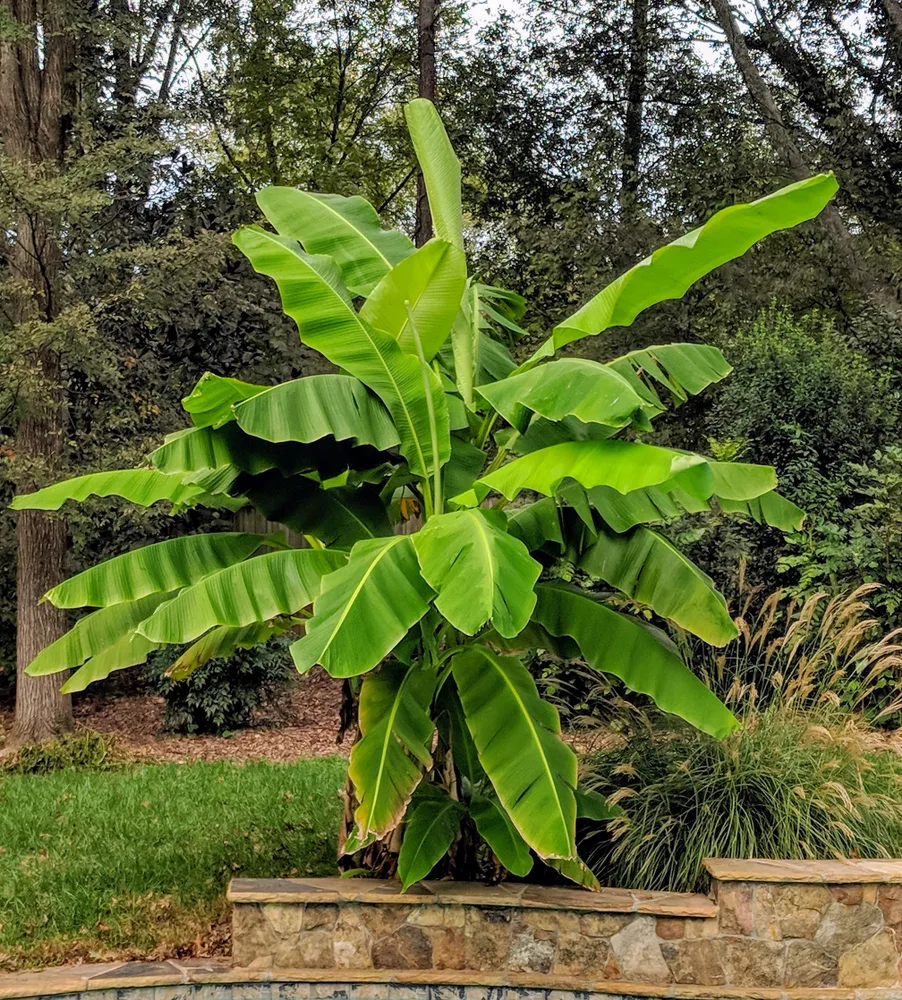
You don’t need to visit a beach-side resort to enjoy banana foliage in your backyard. Hardy banana plants like the Japanese banana tree can survive as far north as USDA Zone 5 and will withstand temperatures down to -20 F.
These statement plants grow up to 13 feet tall and produce expansive green foliage like their tropical relatives. Just note that they are purely ornamental and won’t produce edible fruit.
To protect against cold weather, make sure you cut the tree down to ground level after the first frost and mulch the stump heavily to insulate it over the winter months.
2. Toad Lily (Tricyrtis hirta)
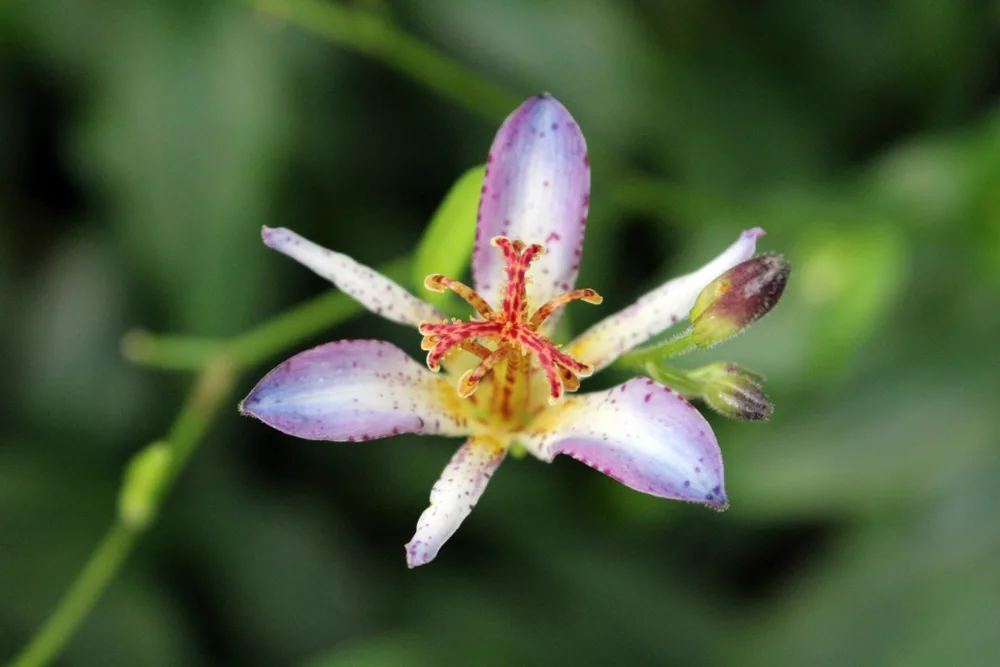
This cold-hardy tropical plant produces delightfully speckled flowers in blues, pinks, purples, and yellows. Toad lilies tend to bloom late in the summer and thrive in partially shaded spaces with rich soil.
You can grow them throughout USDA Zones 4-9. Most will survive winter weather with a helping layer of mulch, and you can divide the roots in the spring to propagate more plants.
3. Purple Passionflower (Passiflora incarnata)
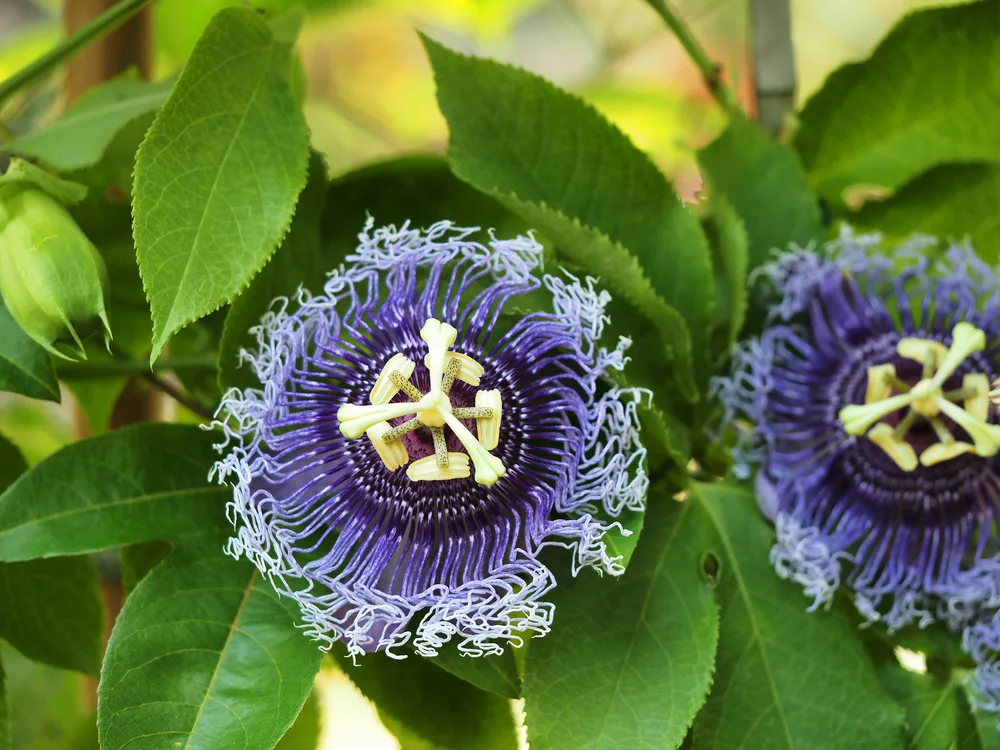
Though it may look more at home on an alien planet, this hardy passionflower (also called a Maypop) is native to the southern United States.
It can survive temperatures down to -20 F and thrives when grown along fences or trellises.
But be warned! Under optimal growing conditions, passionflowers can be aggressive and overwhelm other species in their path.
Expect the purple passionflower to thrive in zones 7-11, though some gardeners have luck as far north as Michigan. The delicate purple flowers tend to last one day each, and they produce edible egg-sized yellow berries later in the year.
4. Canna Lily (Canna indica)
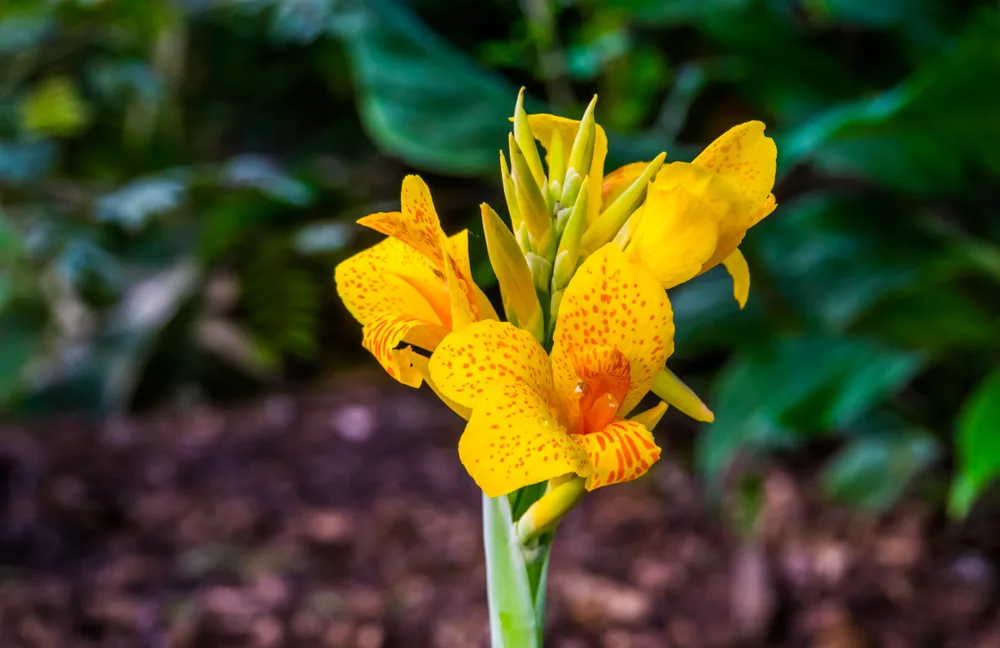
Many consider the canna lily to be the best tropical plant for home gardeners, and for a good reason.
Quick growing and adaptable to a variety of growing conditions, it can grow year-round in USDA growing zones 8-11. All other gardeners should dig out the bulbs in the fall to save them for replanting in the spring.
For best results, plant your canna lilies in soggy soil and give them plenty of compost over the growing season. The flowers should bloom by midsummer, but the gorgeous foliage makes them a centerpiece in the meantime for anyone who wants a tropical-inspired garden.
5. Ginger (Zingiber)
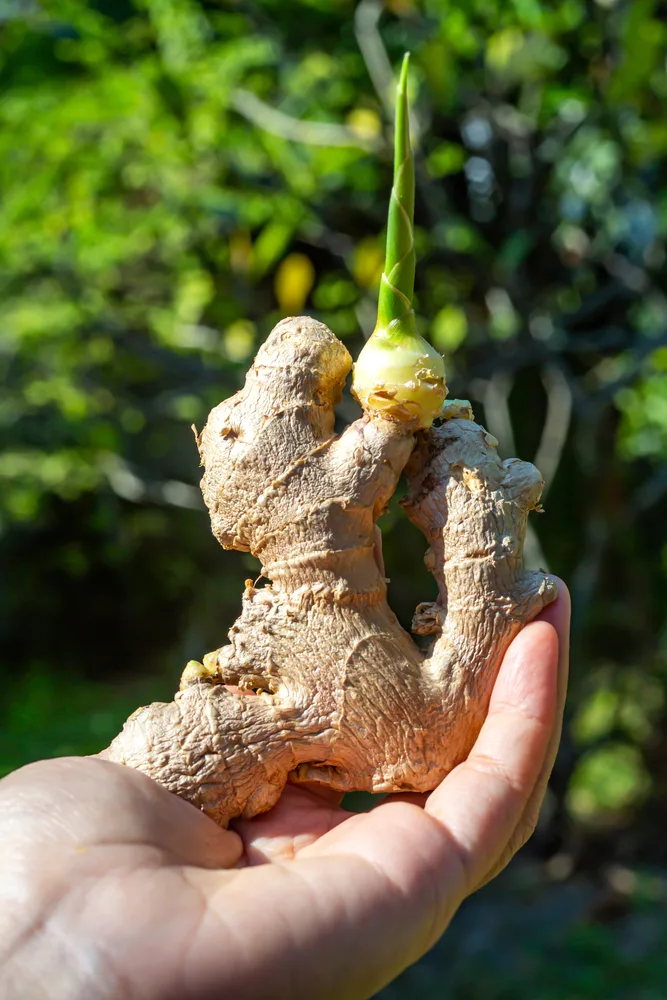
This shade-loving plant thrives in the shade, though it requires hot, humid conditions to produce much of its prized root. You can grow ginger outdoors in USDA Zones 7-10, though I’ve had luck growing it in high tunnels throughout Michigan as well.
So long as you don’t let the plants experience temperatures below 50 degrees F, you can harvest homegrown ginger from the garden for use in curries, soups, drinks, and more.
6. Japanese Painted Fern (Athyrium niponicum)
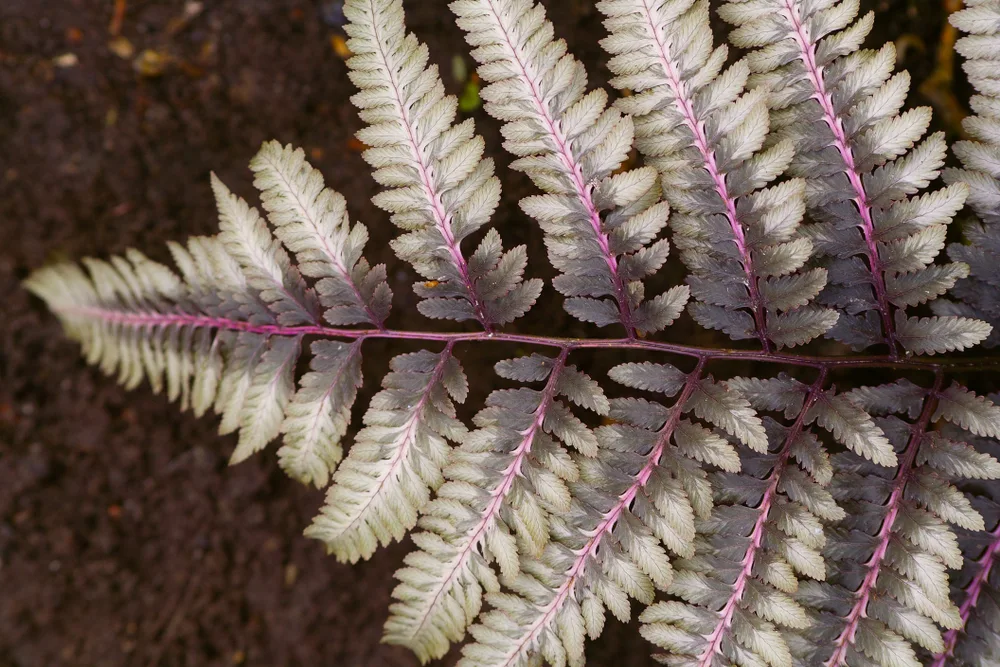
Give your garden a sense of the Jurassic period with a hardy Japanese painted fern. This jewel-toned plant thrives in zones 4-8 and even won an award for the 2004 Perennial Plant of the Year.
It’s a slow-spreading, low-maintenance plant with striking foliage that thrives in shaded areas, making it perfect for gardeners between USDA zones 3-8.
7. Jumbo Elephant Ears (Colocasia esculenta)
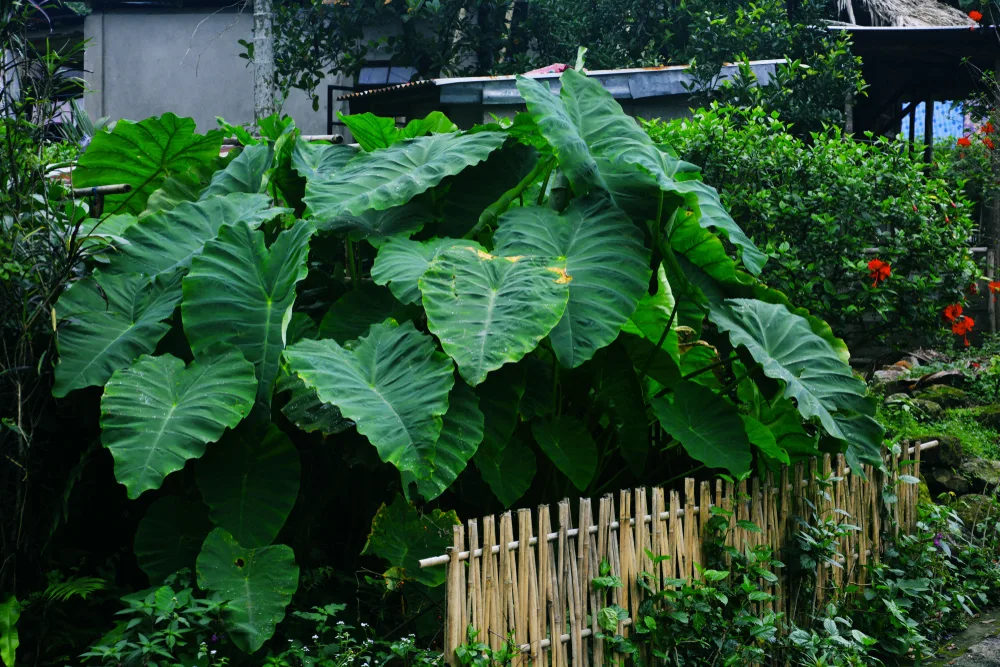
Native to southeast Asia, elephant ears produce massive leaves that add a wow factor to any garden. The leaves can reach over six feet tall, and the bulb roots have a mild taste similar to a potato (you likely know them as taro).
They can survive outdoors year-round through USDA Zone 7, and growers in colder regions can enjoy them in pots that they move indoors for the winter. It’s also possible to dig up the bulbs each fall to store them in a cool, dry place before replanting in the spring.
8. Windmill Palm (Trachycarpus fortunei)
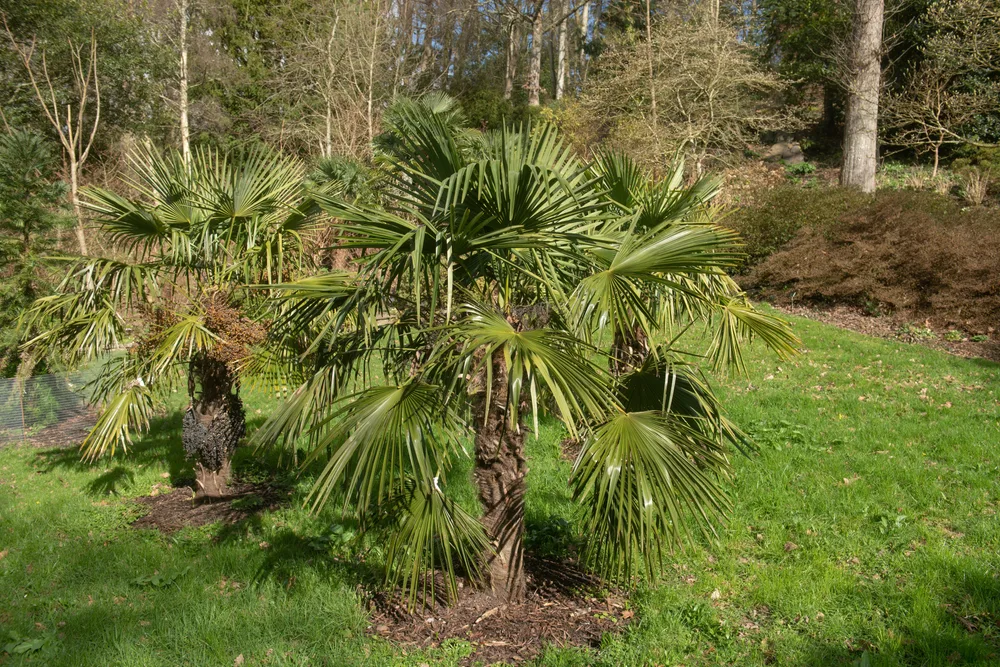
As the most cold-hardy palm species grown in the United States, windmill palms are hardy through USDA Zone 7, though they can also survive in colder climates with the proper precautions. Most will grow 10-20 feet tall and prefer full to partial sun.
You can plant them outside or keep them in containers for better protection in chilly weather. To give the palm the best chance of surviving winter, make sure it’s planted in a place protected from wind with plenty of mulch. You may want to cover it with burlap on the days where the temperature dips below freezing.
9. Pawpaw (Asimina triloba)
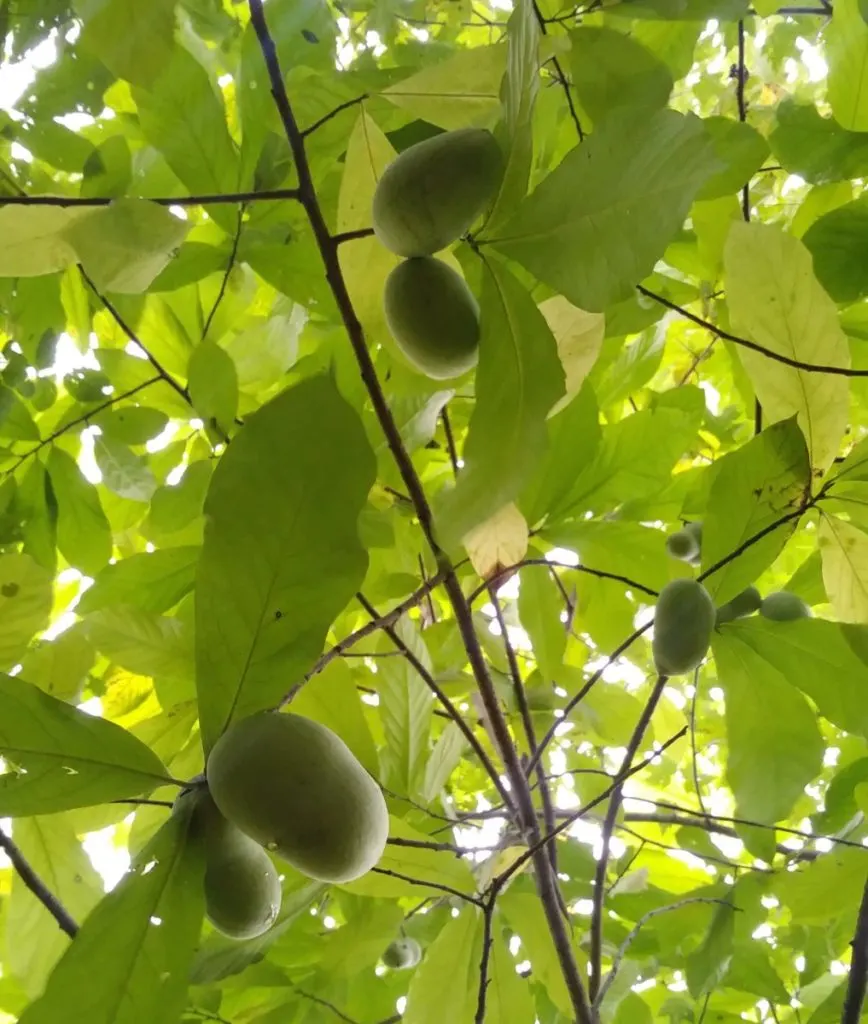
Though technically not a tropical plant, pawpaw trees deserve special mention for their creamy fruits that taste as if they came from near the equator.
This understory tree is native to North America and produces up to 30 pounds of yellow fruit each year that tastes like a blend of mangos and bananas. You can eat them fresh or bake the fruit into bread or other desserts for an exotic taste from your backyard.
Not interested in growing your own? It’s also possible to forage for pawpaw fruit across much of North America. These trees thrive in river bottoms and other places that are wet for much of the year.
10. Jelly Palm (Butia capitata)
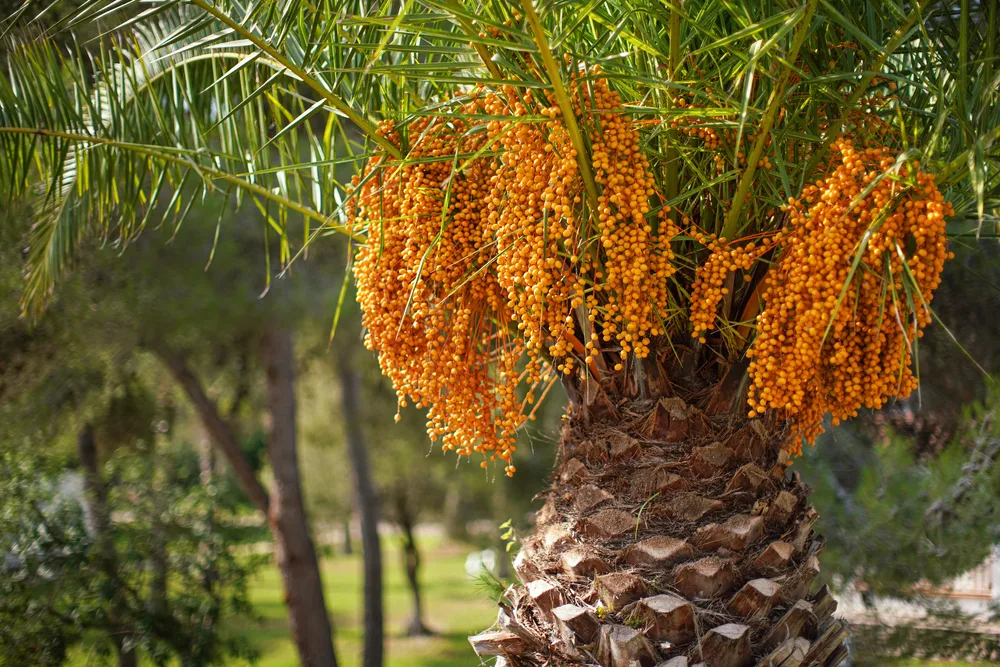
Hardy to 10 degrees F, this compact tree (also known as a pindo palm) is a standout in any yard.
Most grow only about ten feet tall, and they produce orange fruits in the summer that taste like pineapple. You can eat the fruits fresh, turn them into jam, or, if you’re feeling extra adventurous, ferment them for backyard wine.
Gardeners in USDA Zones 6 and higher can plant Jelly Palms directly in the ground, while other growers can enjoy them in containers for better survival rates.
11. Hardy Hibiscus (Hibiscus moscheutos)
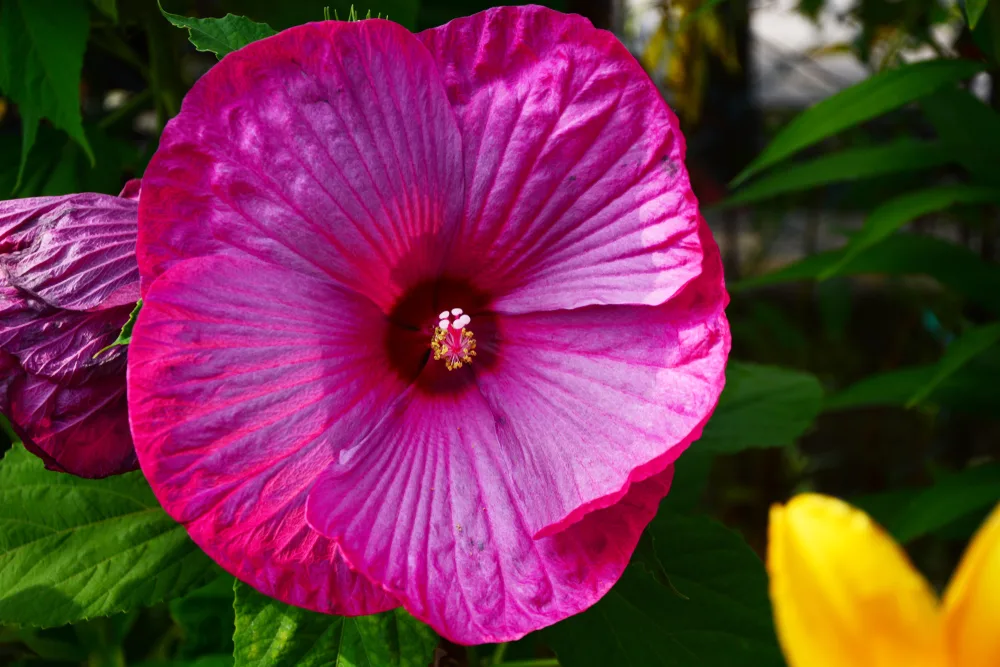
Channel feelings of a Hawaii vacation at home with a Hardy Hibiscus. These perennial shrubs produce showy flowers as large as dinner plates, and they can withstand winter temperatures to USDA Zone 4.
You’ll have the best luck planting your hibiscus in a warm spot with full sun exposure, such as the south side of your home. Keep the soil moist and well mulched to avoid stressing the plant. Though it’s a slow grower, this tropical houseplant relative will give you beautiful blossoms from late summer on.
12. Clumping Bamboo (Bambusa vulgaris)
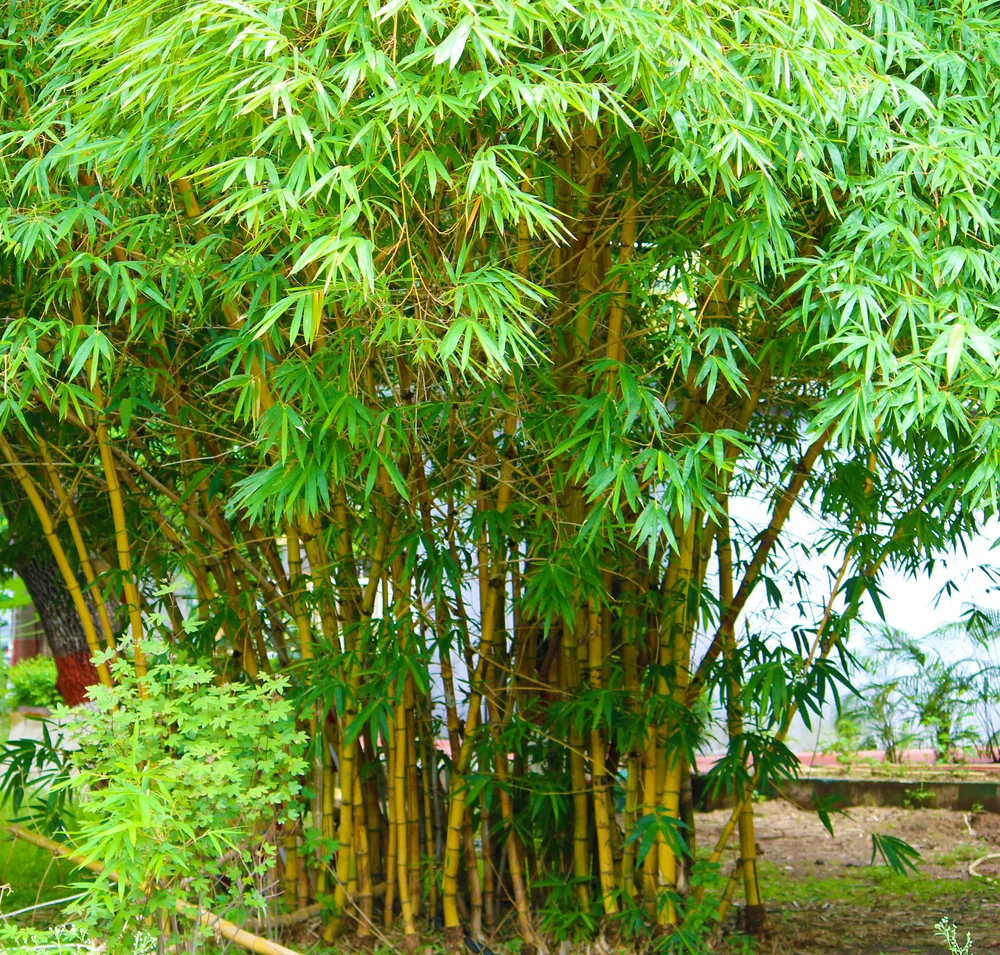
As the tallest member of the grass family, bamboo is a fast-growing plant that works as a garden focal point, natural windbreak or privacy fence. You can grow it through USDA Zones 5-9. Most species will range from eight to 25 feet, and they typically do best with afternoon shade.
Make sure you stick with clumping varieties, as other bamboo species tend to be aggressive and may quickly take over your entire yard by growing a foot or more per day.
13. Chicago Hardy Fig Tree (Ficus carica)
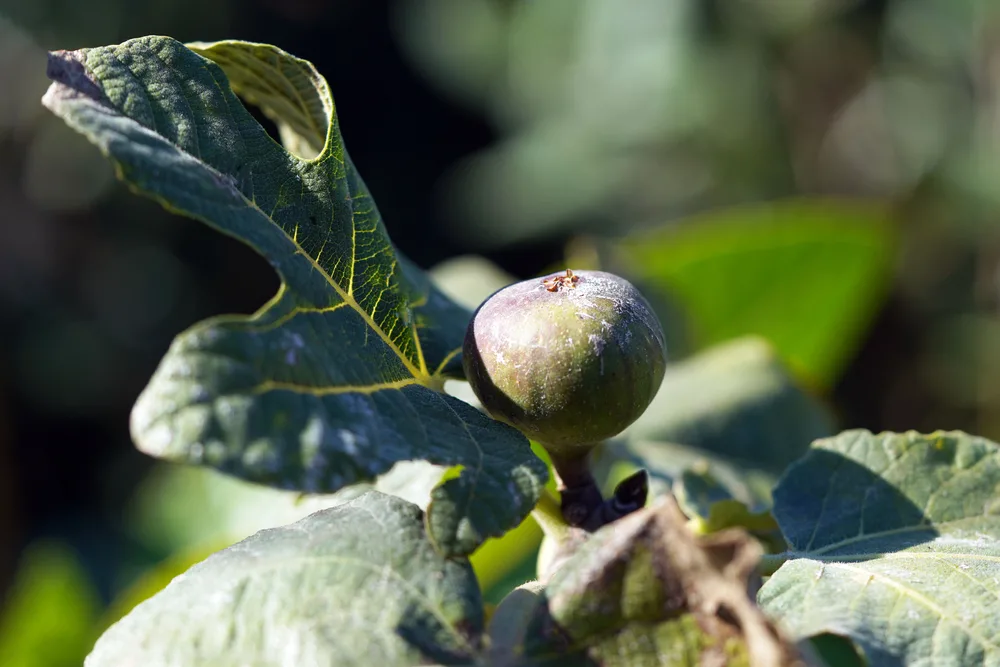
Surprising as it may seem, it’s possible to grow fig trees throughout the Midwest and even further north through USDA Zone 5—so long as you choose a suitable variety. Chicago Hardy Fig Trees thrive in sunny spots with well-drained soil and can produce up to 100 pints of fresh fruit per year.
The trees are self-pollinating, so you can get by with one if that’s all space will allow. But, for those feeling extra creative, this fig tree’s low branching habit makes it perfect for cultivating a living privacy screen.
14. Hardy Jasmine (Jasminum officinale)
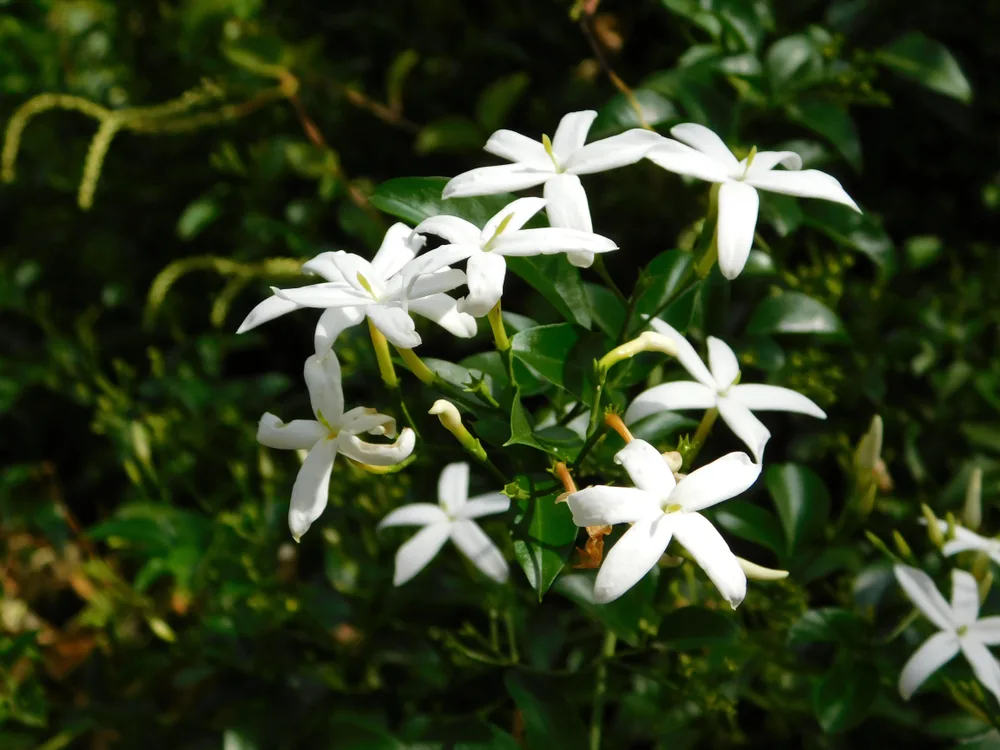
Jasmine’s intoxicating scent makes it a tropical favorite, and those in USDA Zones six and above can grow some at home. This hardy variety actually requires cold winters to bloom the following year.
For best success, give Jasmine vines plenty of water and direct sunlight, and train them up trellising for extra support. Under optimal conditions, you can get blooms from late spring through the end of summer.
15. Hardy Fuchsia (Fuchsia magellanica)
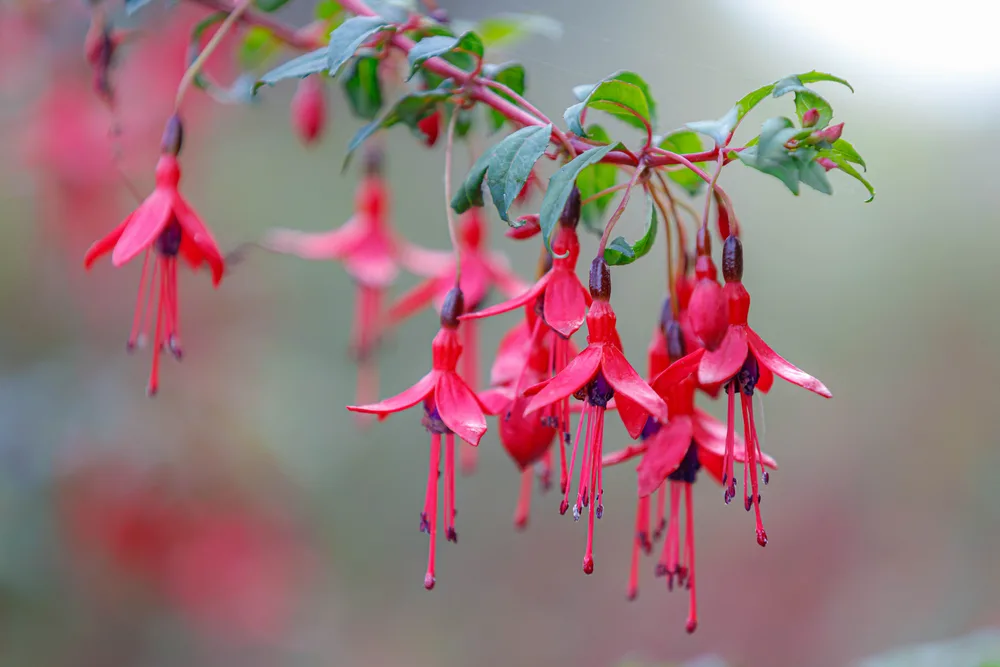
These perennial flowering shrubs do best in USDA Zones 6-7, but you can try your luck in colder regions if you mulch the base of the plant well before winter. The plant is known for its pendant-like flowers that trail over branches that can grow up to ten feet tall.
Keep your hardy fuchsia in moist, fertile soil and protect it from the afternoon sun if possible. It should start blooming in the spring and continue producing flowers until frost. Make sure you add a six-inch layer of mulch to the crown of the plant in the fall to protect it from cold temperatures.
16. Trumpet Vine (Campsis radicans)
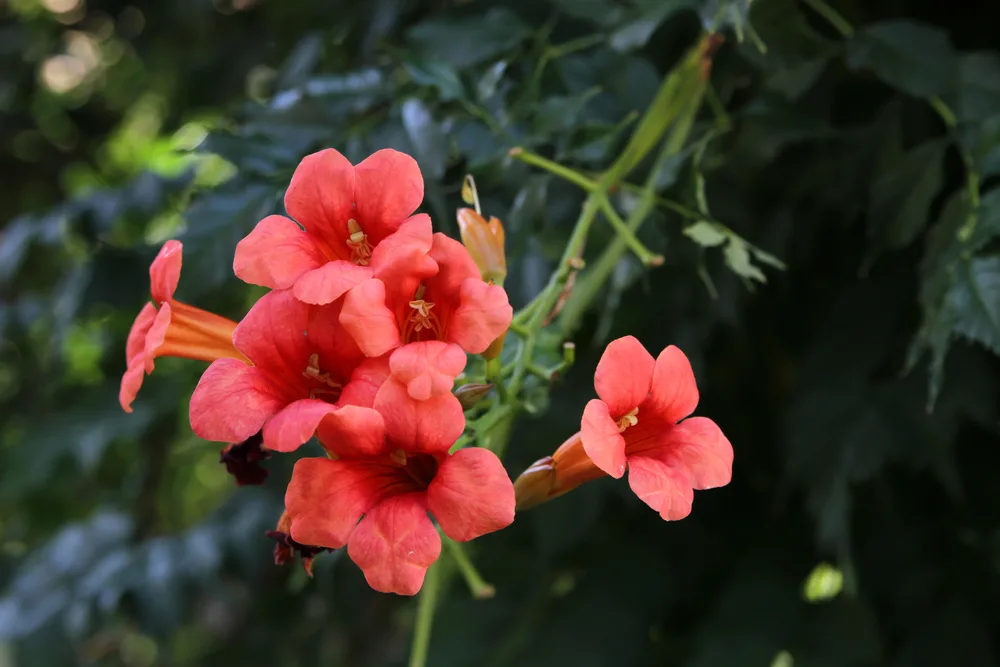
This vigorous vine is a favorite on trellises and pergolas, where it fills the canopy with tubular, tropical-looking flowers all summer. Trumpet vine is prized for its ability to attract hummingbirds, though it can be invasive in the wrong habitat.
The vine thrives in USDA zones 4-9, though it will die back significantly over the winter.
17. Sweet Potato Vine (Ipomoea batatas)
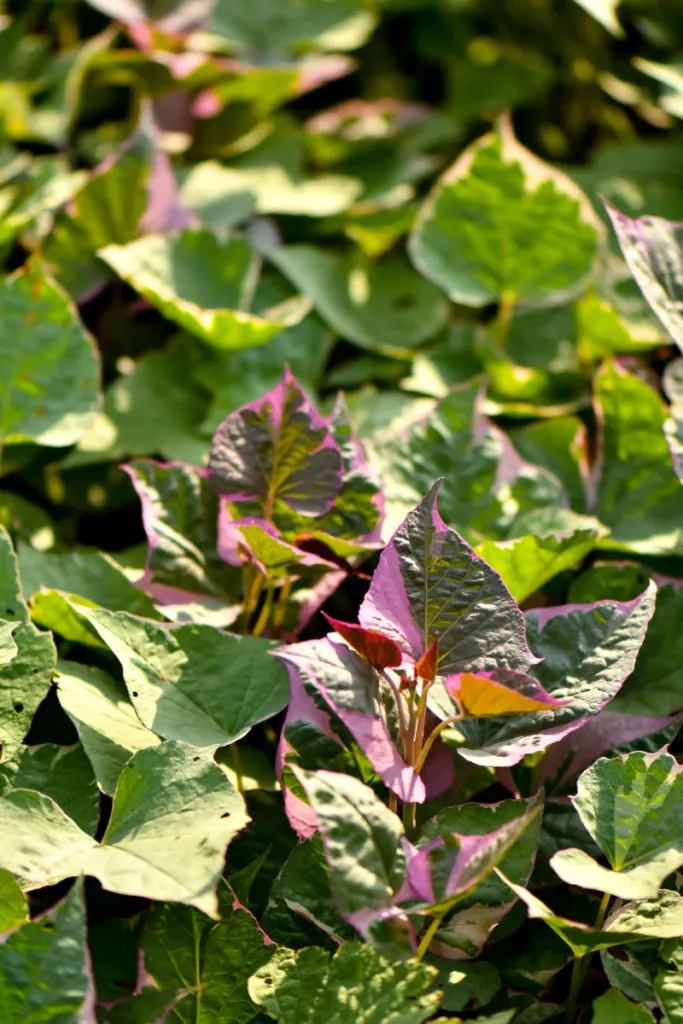
While this lush vine will only grow as an annual across the United States, its fast-growing nature makes it an ideal bedding plant anywhere with hot summer weather.
Sweet potato vines are lime green and will quickly get over six feet long when grown in sun or partial shade. You can let the vines grow over trellises or pinch them back at twelve inches to cultivate a bushier plant.
18. Caladium (Caladium)
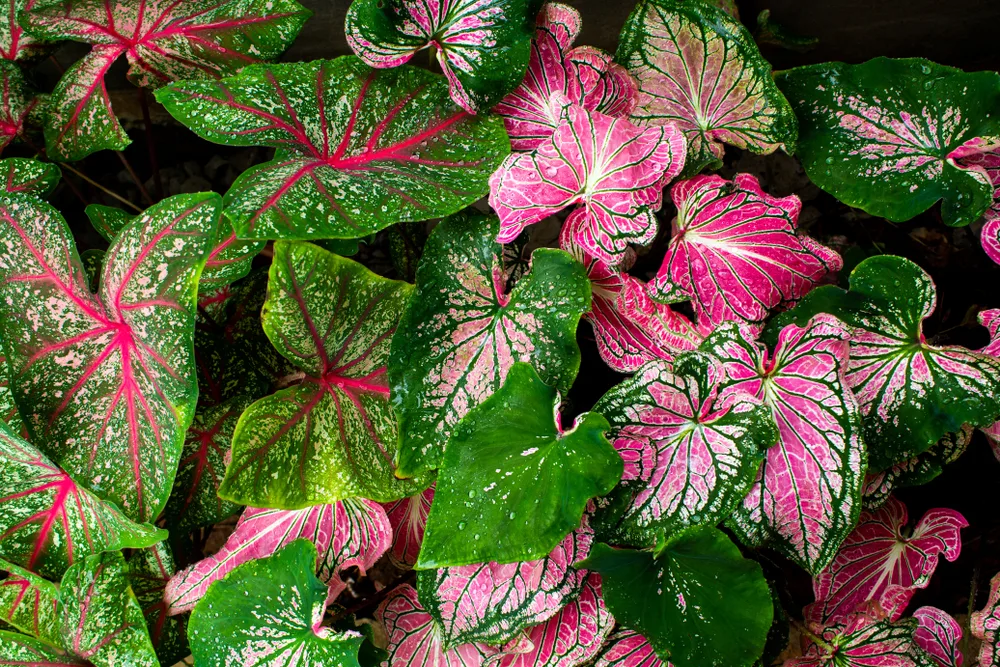
Bring bright colors into your shaded foliage with caladiums. They come in a variety of reds and greens, with the sharpest hues spreading over the veins. Caladium grows well in shaded, moist soil with good drainage, though many people have success with containers as well.
These heat-loving plants are only hardy to USDA Zone 9 and won’t survive frost. However, you can dig out the bulbs in the fall to store them over the winter. Keep the bulbs in a cool, dark space for replanting once the weather warms.
19. Hardy Kiwi (Actinidia arguta)
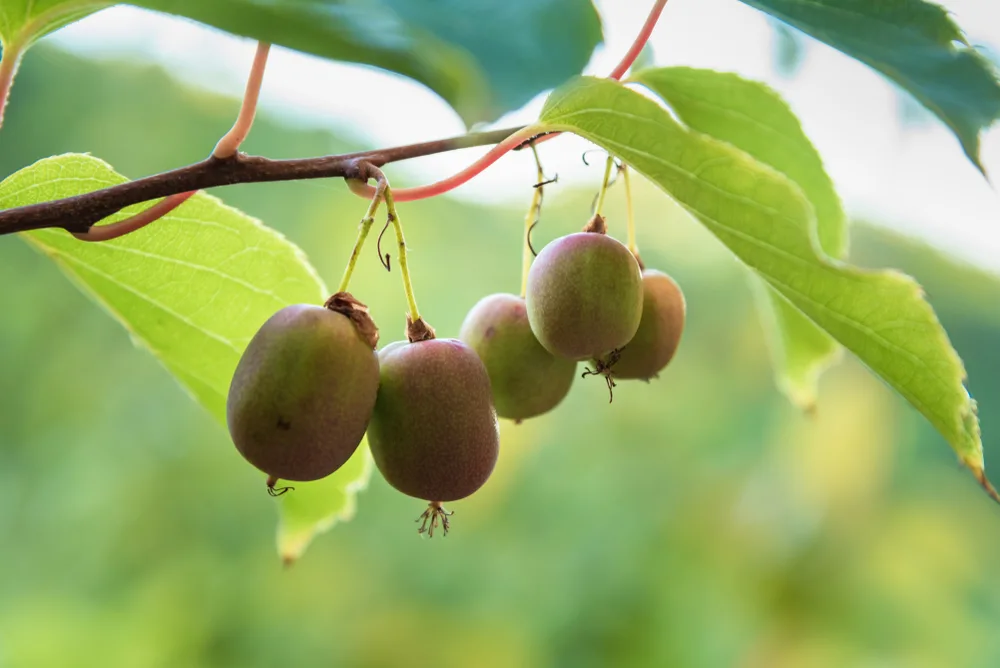
This fast-growing relative to the fuzzy green fruit you find in the store has an appeal all its own.
Hardy kiwi vines produce grape-sized tasty fruits in the late summer that are completely smooth and can be eaten whole. Best of all, the vines will thrive through USDA Zones 3-9. The vines need plenty of support, making them an ideal choice for pergolas or other trellising systems.
Patience is necessary, though, as the plants can take three years or longer before they produce fruit and you need to ensure you have both male and female species available.

Get the famous Rural Sprout newsletter delivered to your inbox.
Including Sunday musings from our editor, Tracey, as well as “What’s Up Wednesday” our roundup of what’s in season and new article updates and alerts.

